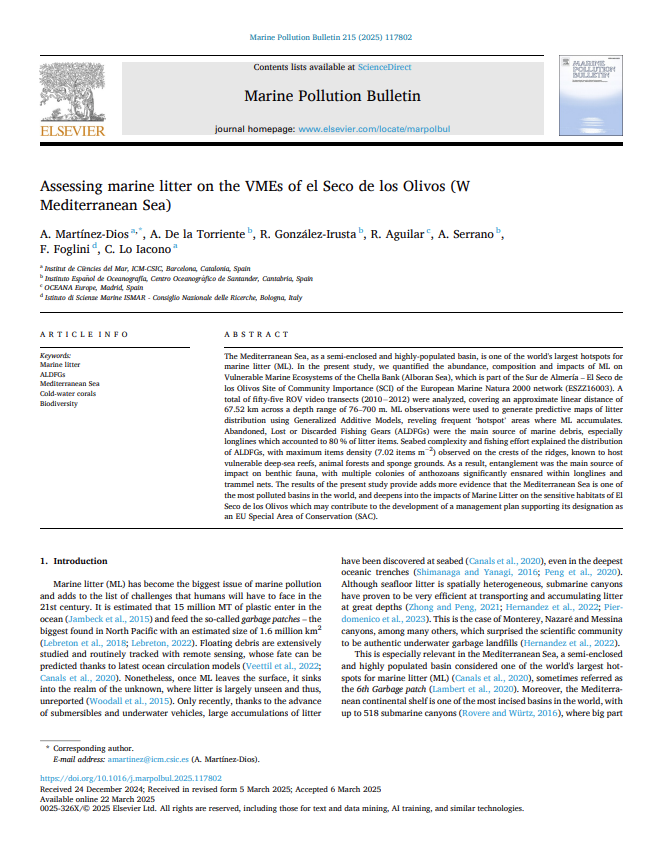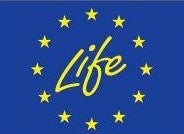Report | March 25, 2025
Assessing marine litter on the VMEs of el Seco de los Olivos (W Mediterranean Sea)

Abstract:
The Mediterranean Sea, as a semi-enclosed and highly-populated basin, is one of the world’s largest hotspots for marine litter (ML). In the present study, we quantified the abundance, composition and impacts of ML on Vulnerable Marine Ecosystems of the Chella Bank (Alboran Sea), which is part of the Sur de Almería – El Seco de los Olivos Site of Community Importance (SCI) of the European Marine Natura 2000 network (ESZZ16003). A total of fifty-five ROV video transects (2010–2012) were analyzed, covering an approximate linear distance of 67.52 km across a depth range of 76–700 m. ML observations were used to generate predictive maps of litter distribution using Generalized Additive Models, reveling frequent ‘hotspot’ areas where ML accumulates. Abandoned, Lost or Discarded Fishing Gears (ALDFGs) were the main source of marine debris, especially longlines which accounted to 80 % of litter items. Seabed complexity and fishing effort explained the distribution of ALDFGs, with maximum items density (7.02 items m2) observed on the crests of the ridges, known to host vulnerable deep-sea reefs, animal forests and sponge grounds. As a result, entanglement was the main source of impact on benthic fauna, with multiple colonies of anthozoans significantly ensnared within longlines and trammel nets. The results of the present study provide adds more evidence that the Mediterranean Sea is one of the most polluted basins in the world, and deepens into the impacts of Marine Litter on the sensitive habitats of El Seco de los Olivos which may contribute to the development of a management plan supporting its designation as an EU Special Area of Conservation (SAC).

